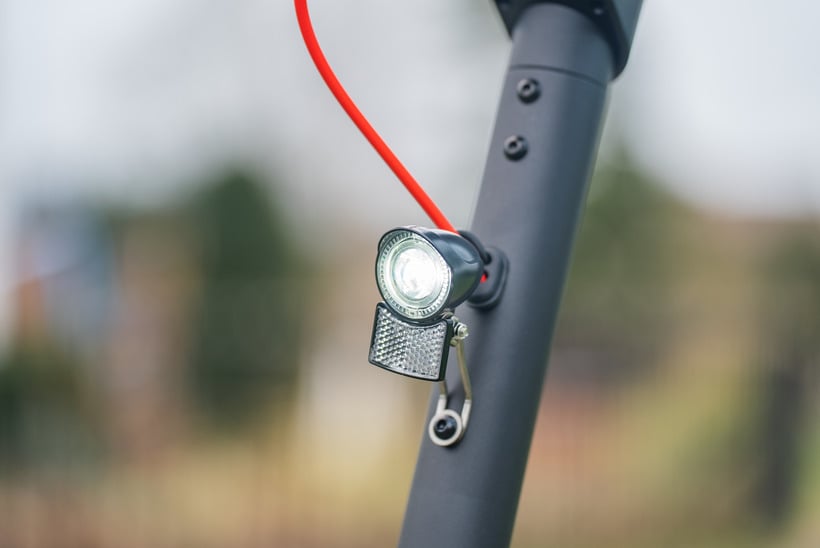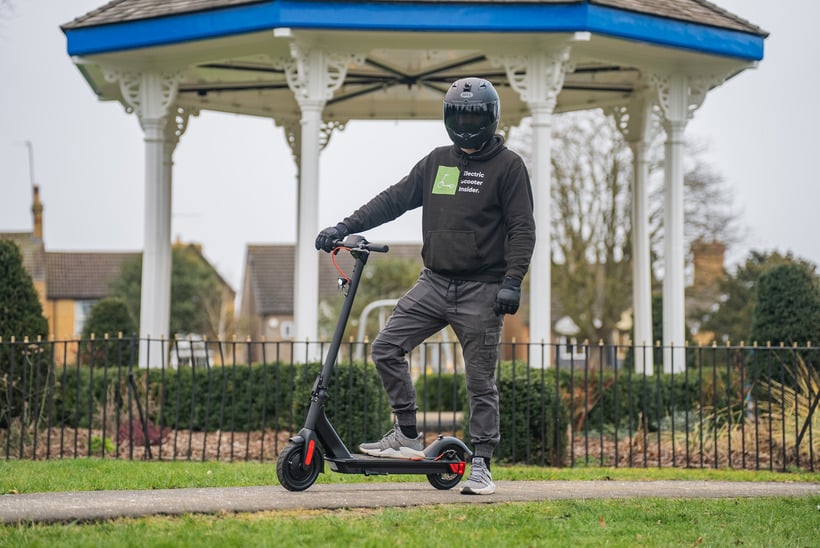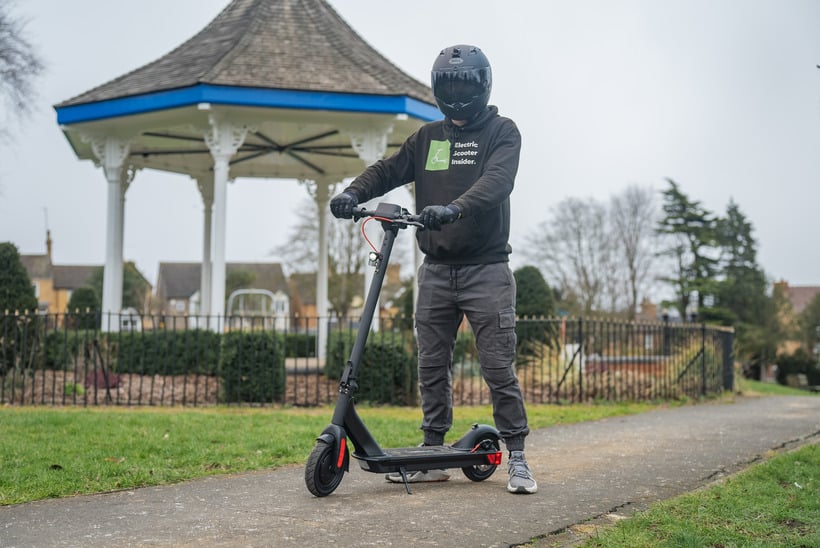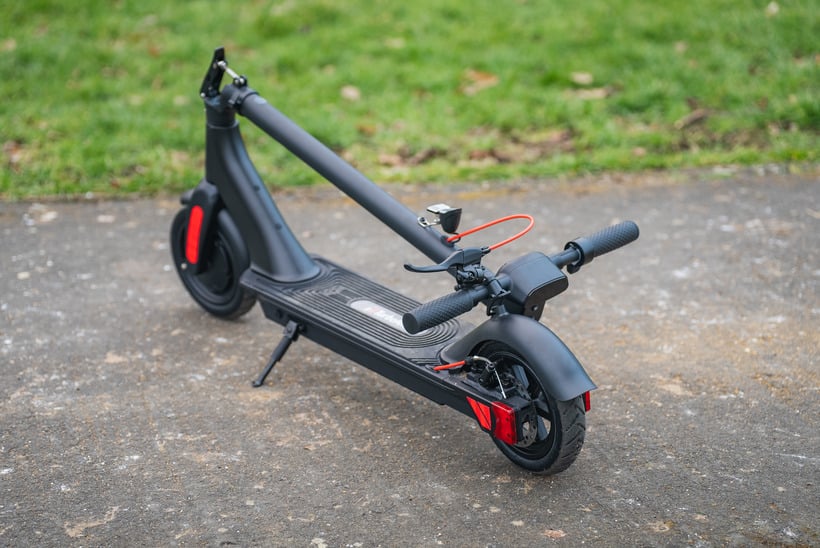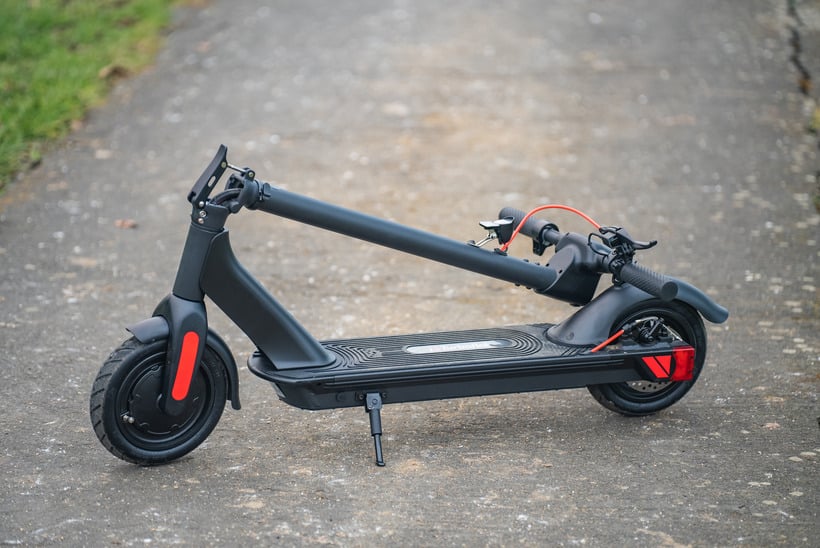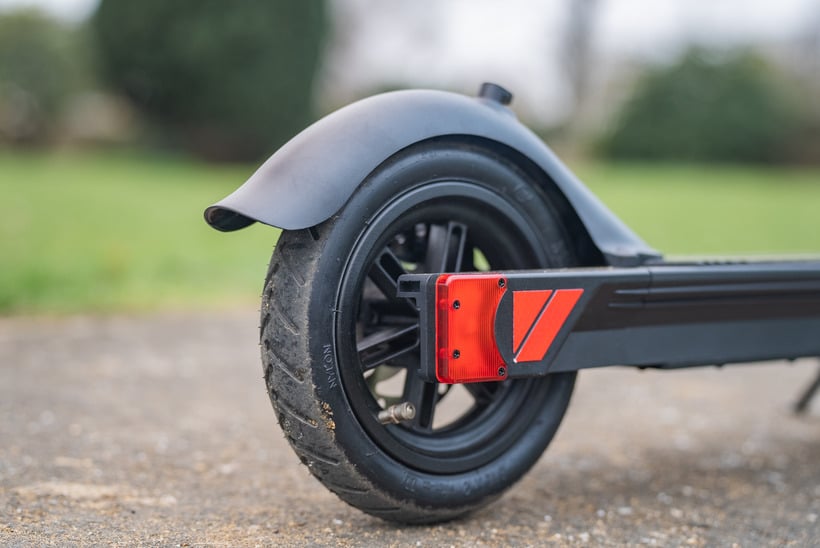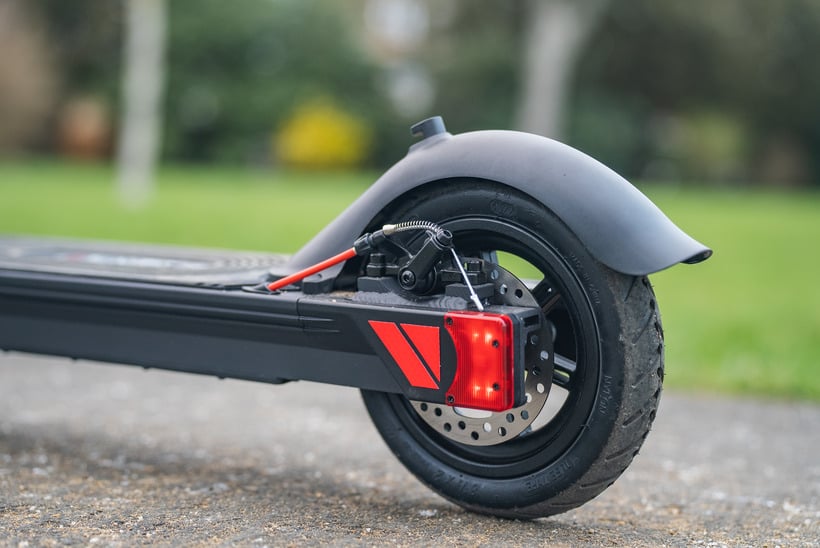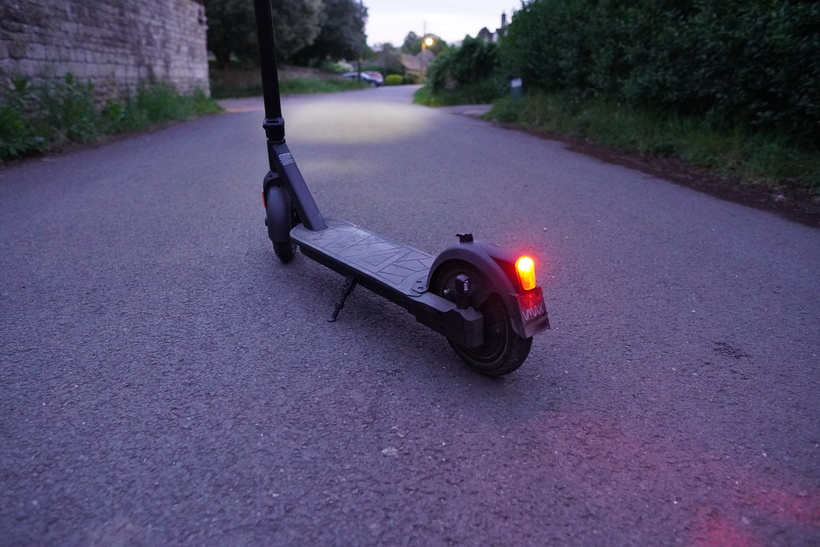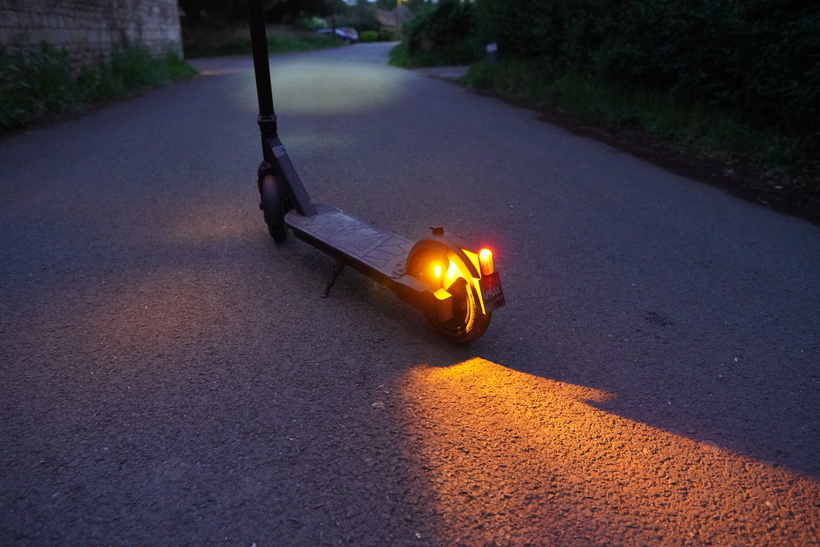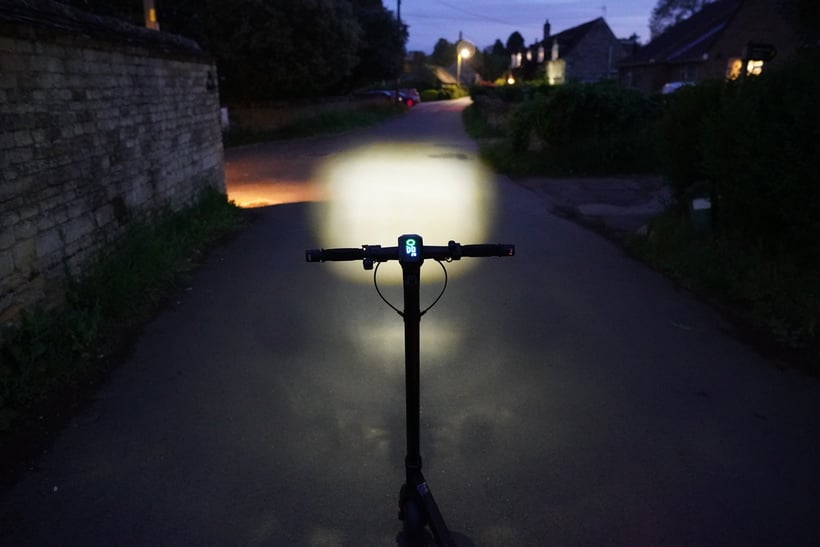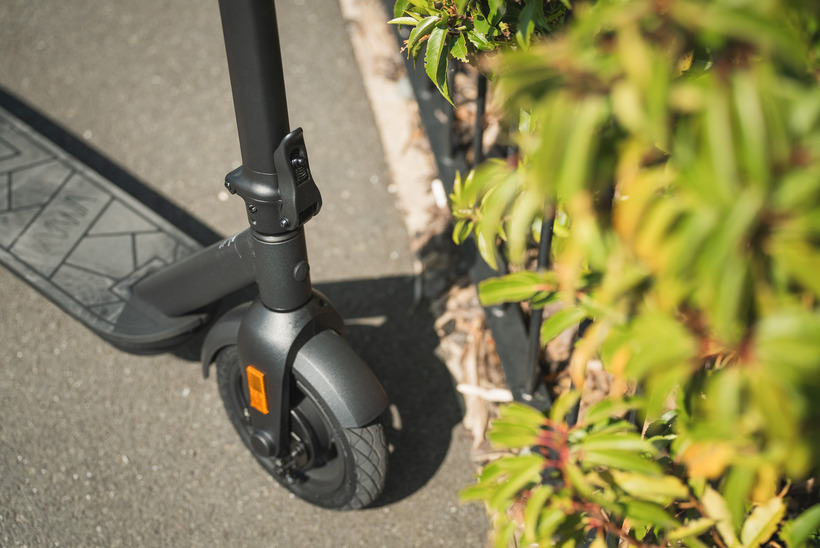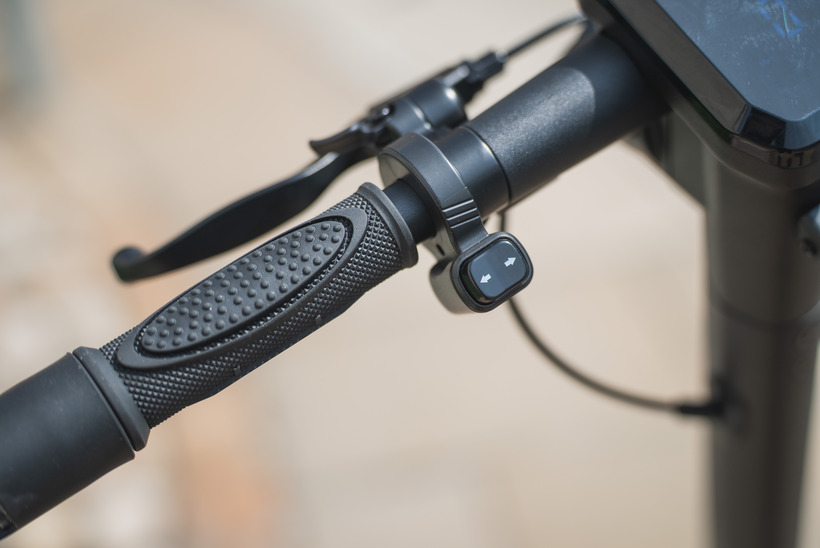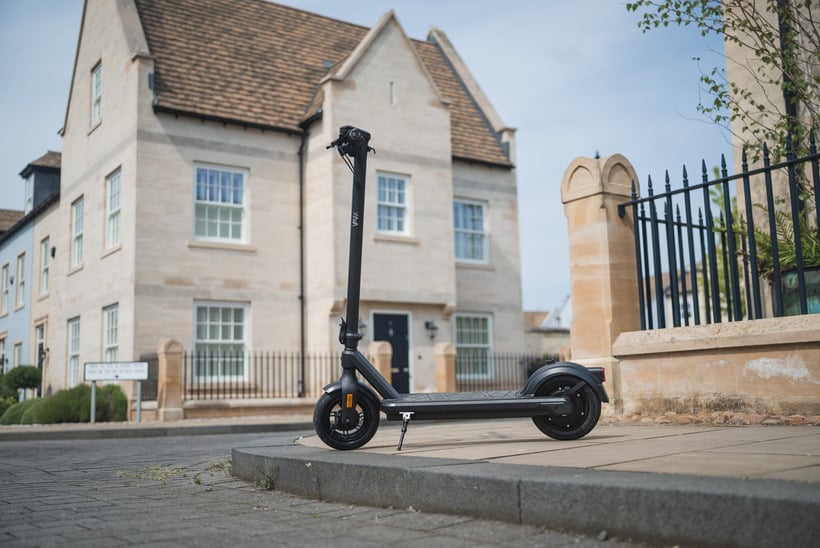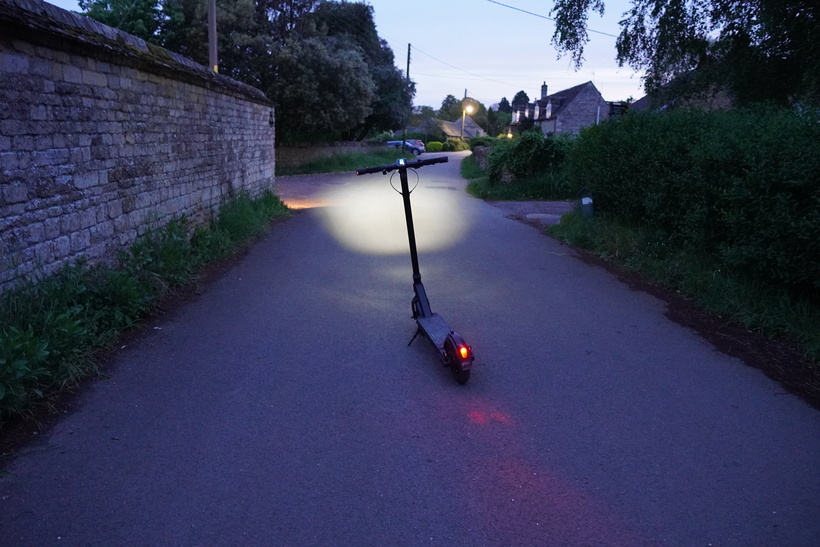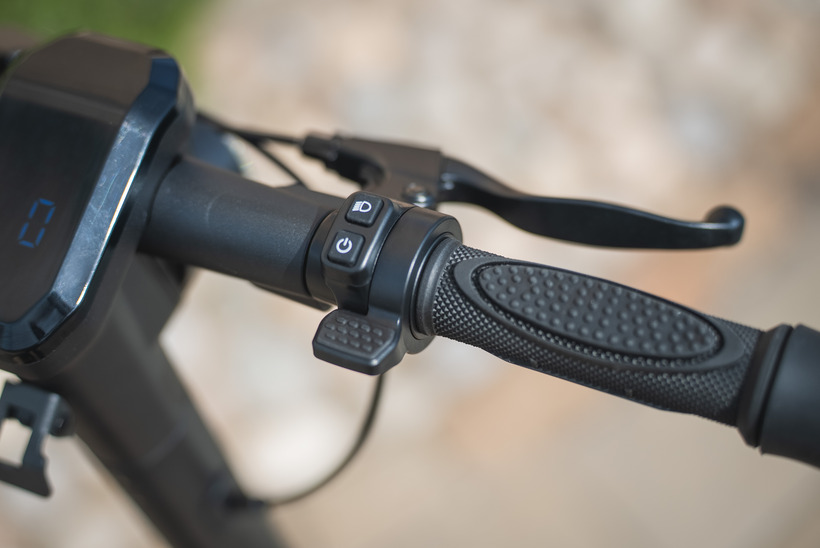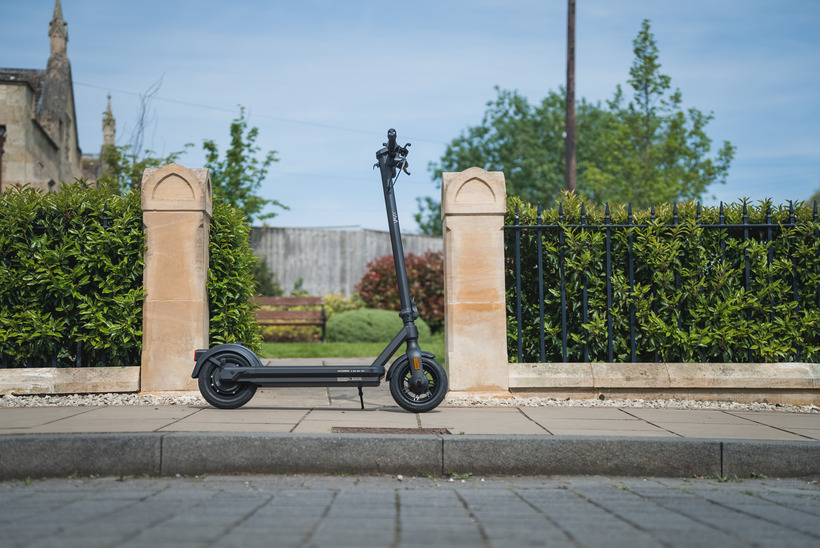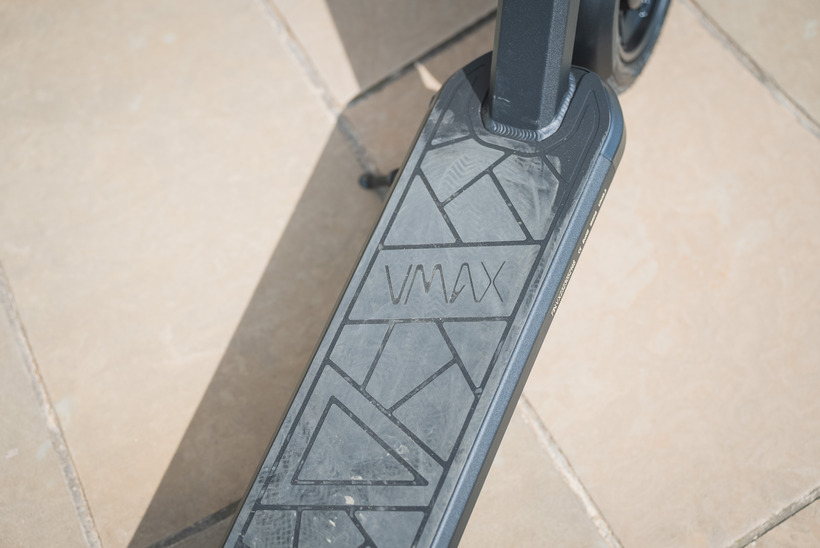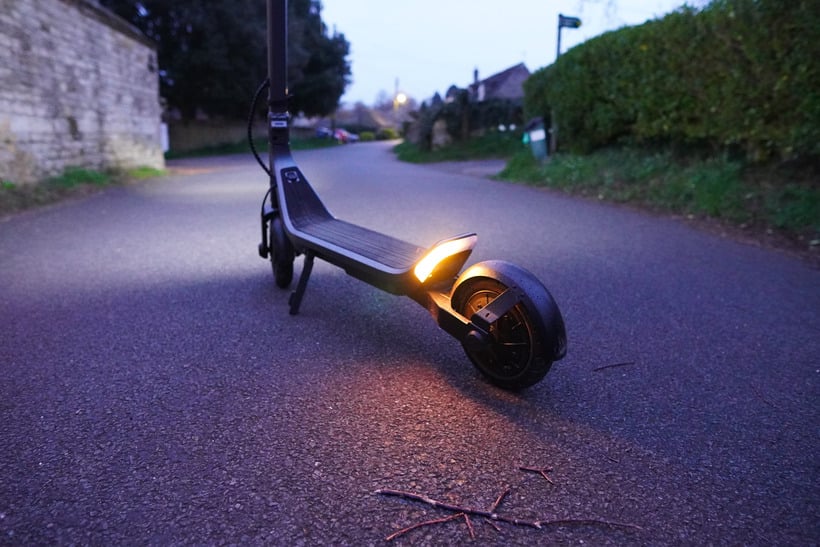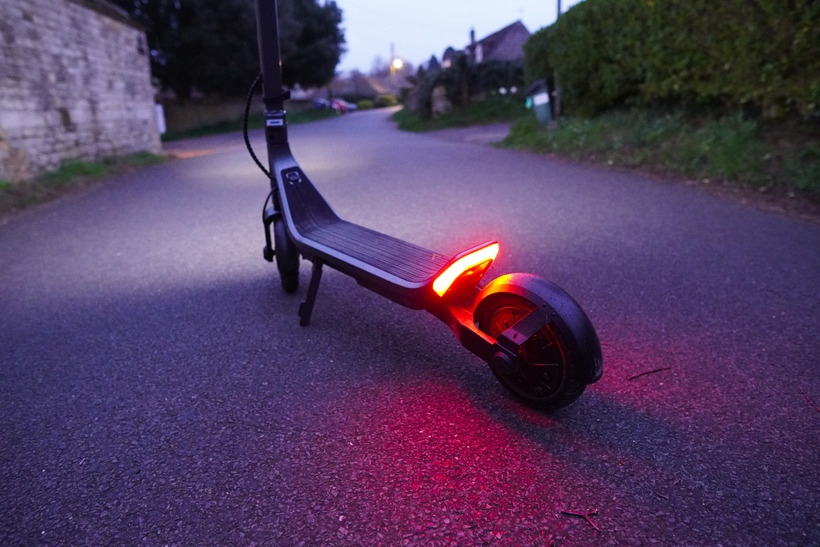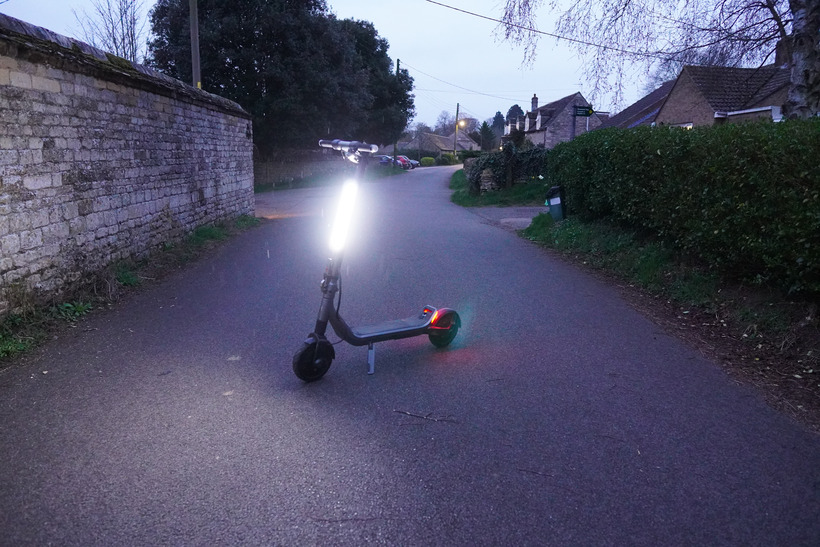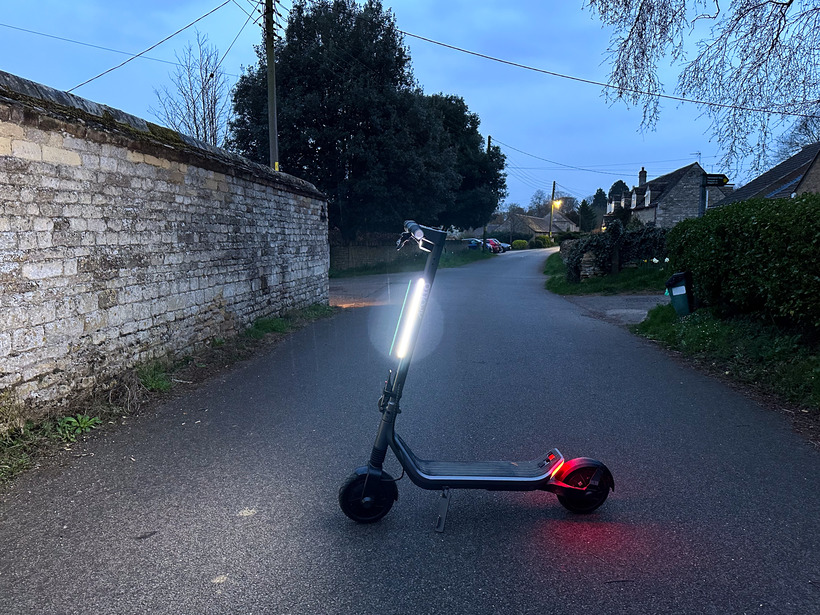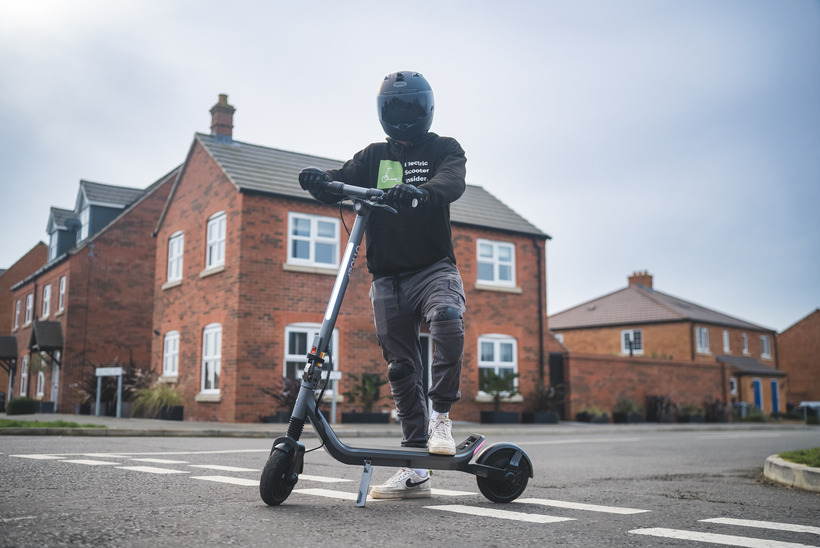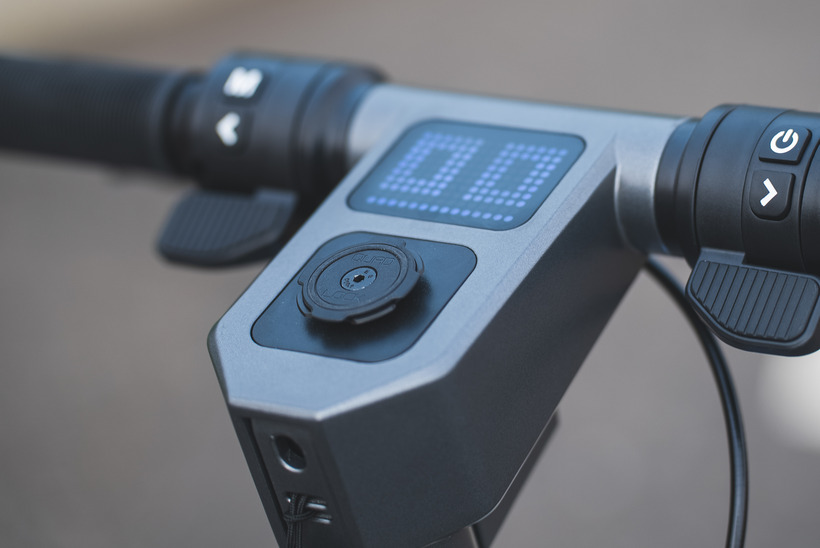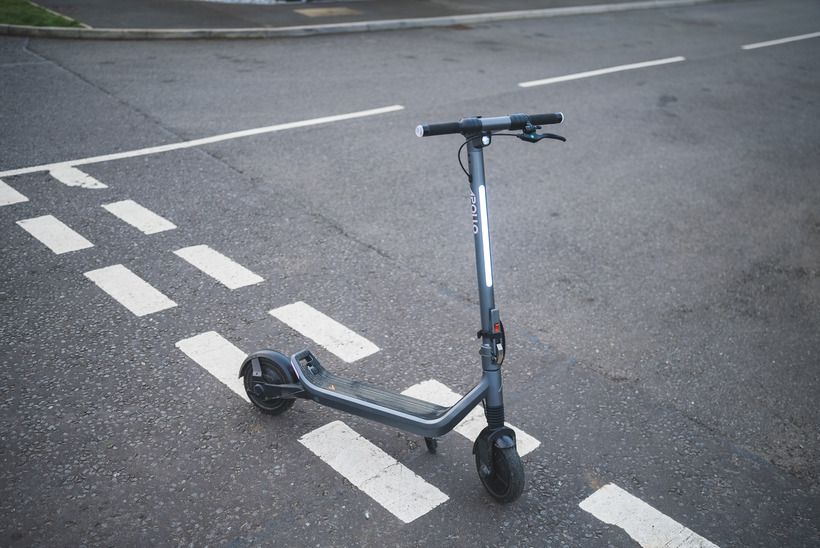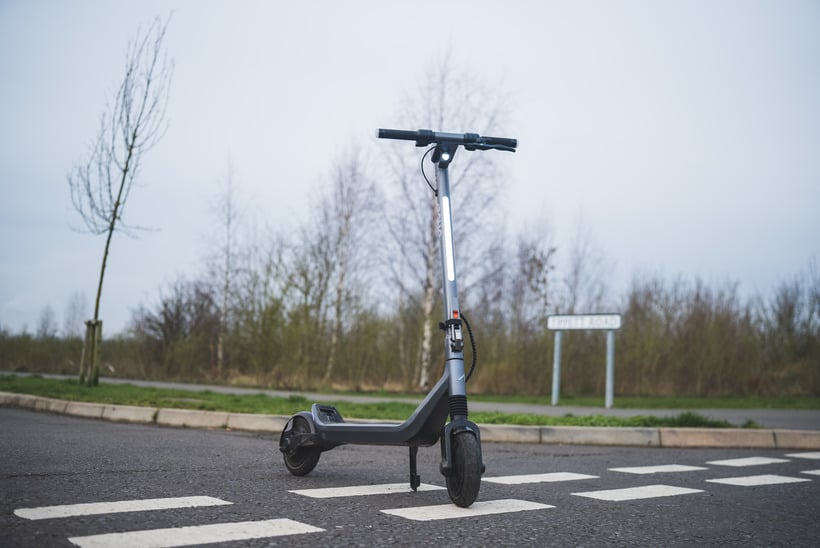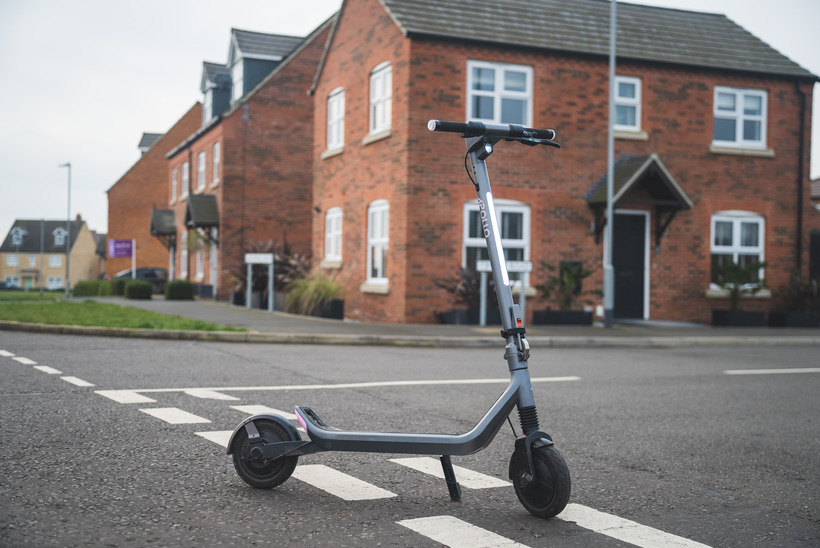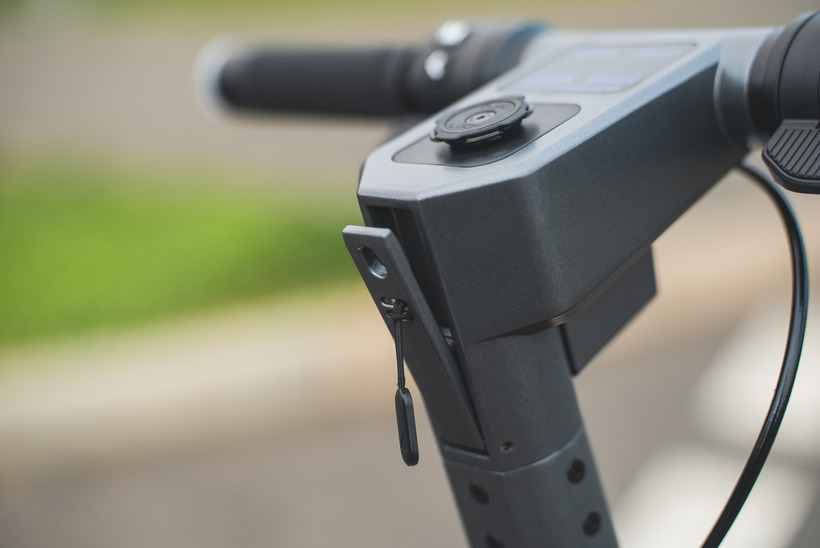Top Picks & Comparison: Best Electric Scooters for College Students (Quick List)
Quick List: Best Electric Scooters for College
I tested 24 affordable electric scooters to find the 4 best models.
- Turboant M10 Lite – Best Basic Budget For Campus Cruising
- VMAX VX5 Pro ST – Best All-Around & Overall Value
- VMAX VX2 Pro ST – Best Long-Range Commuter for Daily Rides
- Apollo Go – Most Reliable, Low-Maintenance & Feature-Rich
Best Electric Scooters For College
Best Basic Budget For Campus Cruising
Performance Report
Performance Report:
Tester: Josh Frisby (190 lbs, 6.1 ft)
- Top Speed: 16 mph
- Real Speed: 15.8 mph*
- 0-15 mph: 7.8 s*
- Max Range: 15.5 miles
- Real Range: 10 miles*
- Braking: 2.9 meters*
- Max Incline: 15 degrees
- Optimal Incline: 7 degrees*
- Weight: 31 lbs
- Load: 220 lbs
Pros & Cons
The Good:
- Outstanding value for money
- Chart-topping performance in the sub $400 category
- Ride and build quality are impressive
- Dual-braking system is strong
- Clean and tidy cable management
- USB charging port that works
- Super quick and easy folding mechanism
- Anti-glare display
- Long fenders prevent splashback
- IP54 water-resistance rating
The Bad:
- Deck is a little short
- Cruise control has a habit of kicking in uninvited
Video Review
Photos
Best All-Around & Overall Value

VMAX VX5 Pro ST
Performance Report
Performance Report:
Tester: Josh Frisby (197 lbs, 6.1 ft)
- Top Speed: 18 mph
- Real Speed: 17.4 mph*
- 0-15 mph: 6.7 s*
- Max Range: 17 miles
- Real Range: 14.3 miles*
- Braking: 2.0 meters*
- Suspension: n/a
- Max Incline: 14 degrees
- Weight: 35.9 lbs
- Load: 265 lbs
Pros & Cons
The Good:
- One of the longest real-world tested ranges in its price category
- Shortest stopping distance among its rivals
- Top-tier ride quality in the sub-$600 class
- Wider than normal handlebars promote good handling
- Regenerative braking system recycles kinetic energy to recharge the battery on the go
- High degree of build quality with a UL2272 certified battery
- Clean, simple, and functional design
- Grippy, nimble tires
- Immaculate cable management
- Turn signals that are visible from the front, rear, and sides
- Mobile app allows for customized performance
- Slick folding mechanism
- 40.2-inch deck-to-handlebar height makes it suitable for tall riders up to 6’3”
- Protective IPX6 water-resistance rating
- Long fenders that prevent splashback
- Quiet motor
- Low maintenance
- 2-year warranty
The Bad:
- Display gets washed out in direct light
- The taillight is bright at night, but it doesn’t flash when you brake - it just glows a brighter red
Video Review
Best Long-Range Commuter for Daily Rides

VMAX VX2 Pro ST
Performance Report
Performance Report:
Tester: Josh Frisby (190 lbs, 6.1 ft)
- Top Speed: 24 mph
- Real Speed: 24.5 mph*
- 0-15 mph: 3.8 s*
- Max Range: 28 miles
- Real Range: 24.8 miles*
- Braking: 3.0 meters*
- Suspension: n/a
- Max Incline: 15 degrees
- Optimal Incline: 9 degrees*
- Weight: 45 lbs
- Load: 287 lbs
Pros & Cons
The Good:
- Fastest acceleration among similarly priced single-motor scooters
- Longest tested range in the sub-$900 class
- Strong brakes that use a regenerative system to recycle kinetic energy to recharge the battery on the go
- Exceptionally quiet motor
- Impeccable build quality
- Nimble tubeless tires
- Suitable for tall and heavy riders
- Bright lights with excellent turn signals that are visible from the front, rear, and sides
- Mobile app allows for customized performance
- Slick folding mechanism
- Tidy cable management
- Protective IPX6 water-resistance rating
- Long fenders that prevent splashback
- Low maintenance
- 2-year warranty
The Bad:
- Doesn’t have suspension
- Display gets washed out in direct light
- The taillight is bright at night, but it doesn’t flash when you brake - it just glows a brighter red
Video Review
Most Reliable, Low-Maintenance & Feature-Rich
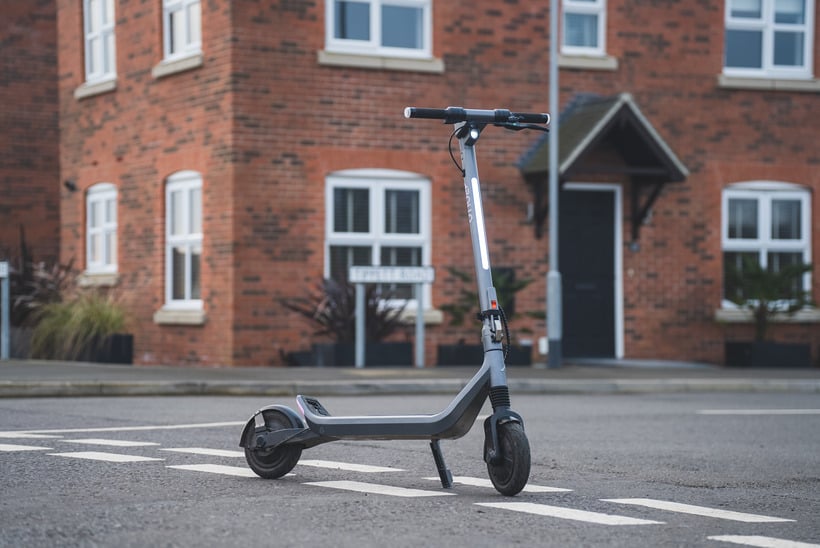
Apollo Go
Performance Report
Performance Report:
Tester: Josh Frisby (197 lbs, 6.1 ft)
- Top Speed: 28 mph
- Real Speed: 25.5 mph*
- 0-15 mph: 3.8 s*
- Max Range: 30 miles
- Real Range: 17.6 miles*
- Braking: 3.1 meters*
- Suspension: 6/10*
- Max Incline: 25 degrees
- Optimal Incline: 12 degrees*
- Weight: 46 lbs
- Load: 265 lbs
Pros & Cons
The Good:
- Ultra-sleek design
- Premium build quality
- Packed full of useful features
- Cybertruck-inspired lights
- Handlebar integrated turn signals
- Well-designed geometry delivers intuitive control and handling
- Best-in-class cockpit ergonomics
- DOT Matrix display is extremely bright and easy to read from any angle
- Comes with a free QuadLock phone case accessory (saving you $30)
- Integrated mobile app for customized performance
- Stable and nimble thanks to its 14-degree rake angle
- Reliable self-healing tires
- A regenerative braking system recycles kinetic energy to recharge the battery by up to 10%
- A 40-inch deck-to-handlebar height and 265 lb load-bearing capacity make it well-suited to tall and heavy riders
- Impeccable cable management
- Extremely low maintenance
- Battery management system ensures long-term health
- Protective IP66 water-resistance rating
The Bad:
- The plastic caps that encapsulate the turn signals are prone to damage
- The taillight is dim during the day
- The clip-in, clip-out folding hook system is a little fiddly
- The handlebars are slightly narrow
Video Review
Photos
Compare Electric Scooters For College
Turboant M10 Lite | VMAX VX5 Pro | VMAX VX2 Pro | Apollo Go |
|
|---|---|---|---|---|
| Where to Buy | Turboant | VMAX | VMAX | Apollo |
| Price | $299.98 | $499 | $899 | $1,099 |
| Award | Best Basic Budget For Campus Cruising | Best All-Around & Overall Value | Best Long-Range Commuter for Daily Rides | Most Reliable, Low-Maintenance & Feature-Rich |
| Review | Review | Review | Review | Review |
| Performance | ||||
| Top Speed | 15.8 mph | 17.4 mph | 24.5 mph | 25.5 mph |
| 0-15 MPH | 7.8 s | 6.7 s | 3.8 s | 3.8 s |
| Max Range | 15.5 miles | 17 miles | 28 miles | 30 miles |
| Tested Range | 10 miles | 14.3 miles | 24.8 miles | 17.6 miles |
| Braking | 2.9 meters | 2.0 meters | 3.0 meters | 3.1 meters |
| Shock Absorp. | n/a | n/a | n/a | 6/10 |
| Max Incline | 15 degrees | 14 degrees | 15 degrees | 25 degrees |
| Optimal Incline | 7 degrees | 8 degrees | 9 degrees | 12 degrees |
| Specs | ||||
| Motor | 36V 350W | 36V 400W | 48V 500W | 36V 350W (x2) |
| Throttle | Thumb | Thumb | Thumb | Thumb |
| Battery | 36V 6.6Ah FST | 36V 7.8Ah FST | 48V 13Ah FST | 36V 15Ah FST |
| Charge Time | 5 hours | 4 hours | 6.5 hours | 7.5 hours |
| Brakes | Disc, Electronic | Drum, Regen | Drum, Regen | Drum, Regen |
| Suspension | None | None | None | Spring, Rubber Block |
| Tire Size | 8.5 inch | 9 inch | 10 inch | 9 inch |
| Tire Type | Air (Inner-Tube) | Air (Tubeless) | Air (Tubeless) | Air (Tubeless, Self-Healing) |
| Weight | 30.9 lbs | 36.8 lbs | 45 lbs | 46 lbs |
| Load | 220 lbs | 265 lbs | 287 lbs | 265 lbs |
| Foldability | Folds at Stem | Folds at Stem | Folds at Stem | Folds at Stem |
| Lights | Headlight, Taillight | Headlight, Taillight, Turn Signals | Headlight, Taillight, Turn Signals | Headlight, Taillight, Turn Signals |
| IP Rating | IP54 | IPX6 | IPX6 | IP66 |
| Terrain | Street | Street | Street | Street |
How Did I Test the Scooters?
Test Criteria
To find the 4 best electric scooters for college, I tested 24 affordable models that all cost less than $1,000. Each scooter was evaluated on its performance across top speed, acceleration, range, hill climbing, braking, and ride quality. I also assessed their practicality for campus life by reporting on their portability, as well as their durability to withstand daily wear and tear.
Top Speed & Acceleration
To assess each scooter’s motor power on a level playing field, I recorded the time that it took them to reach 15 mph, as well as the speed at which they topped out.
To ensure consistent results, I completed the tests on a flat, dry road. Each scooter’s performance settings were dialed up to the max (i.e. I selected the fastest riding modes, strongest acceleration settings, and – where possible – enabled zero-start modes). I also made sure that their tires were pumped up and their batteries fully charged.

The maximum speed that I tested among all 15 scooters was 26 mph. However, I found that an average speed of 18.4 mph was most suitable for busy environments.
Range
Importantly, I wanted to make sure that the scooters had enough battery power to not only travel around campus but also beyond.
To do this, I reported on their tested range. These figures differ significantly from the maximum manufacturer range stats since they are based on real-world use.

When testing each scooter, I weighed between 190 and 197 lbs and made sure to alternate my riding style with periods of fast acceleration, cruising, and multiple stops.
Hill Climbing
Here, each scooter was tested on its ability to climb a 10% slope. Those that were most adept at climbing (i.e. at a faster pace) were chosen.

However, it’s important to note that by their very nature, cheaper electric scooters tend not to be the best hill climbers. If your campus is hilly, I recommend a more powerful scooter.
Braking
Campuses can be busy hubs of students and other vehicles, so having the ability to stop on a dime is important.
To assess and compare each scooter’s stopping power, I measured the distance that it took them to stop from 15 mph.

The braking tests were completed a minimum of five times to find an accurate average. However, for each test to qualify, it had to be conducted on a dry, smooth road, while being controlled (i.e. no skidding).
If electronic or regenerative braking systems were present, I set them to their highest strength. Where possible, I also tested them independently to monitor performance without engaging the mechanical brakes.
Ride Quality
I’ve been reviewing electric scooters for many years and one of the key tests that can make or break a scooter’s overall performance is its ride quality. Without it, everything else falls by the wayside.
Unlike the other tests, this one was based predominantly on my subjective opinion, and so to test fairly, I paid particular attention to each scooter’s handling, comfort, and power delivery.

Aside from these observations, I also detailed how the geometry and dimensions of their frames impacted their stability, control, and agility.
Portability
Portability is perhaps one of the most important qualities of a scooter that’s destined for college use, so to report on each scooter’s credentials, I tested the ease of their folding mechanisms and weight to assess how easy they were to collapse and carry.

I also noted how compact each scooter was by assessing its folded length, width, and height.
Reliability
Key to a scooter’s appeal is how durable and reliable it is – especially for students who are already strapped for cash and don’t want to fork out additional funds to replace subpar scooters.
I took this into account by putting the build quality and craftsmanship of each scooter under scrutiny.

Here, I reported on the materials used, the rigidity of the frames and components (i.e. checking for vulnerabilities that could cause structural issues such as stem wobble), protection against wet weather (i.e. IP ratings), the inclusion of battery management systems, and a thorough assessment of warranty policies for peace of mind.






